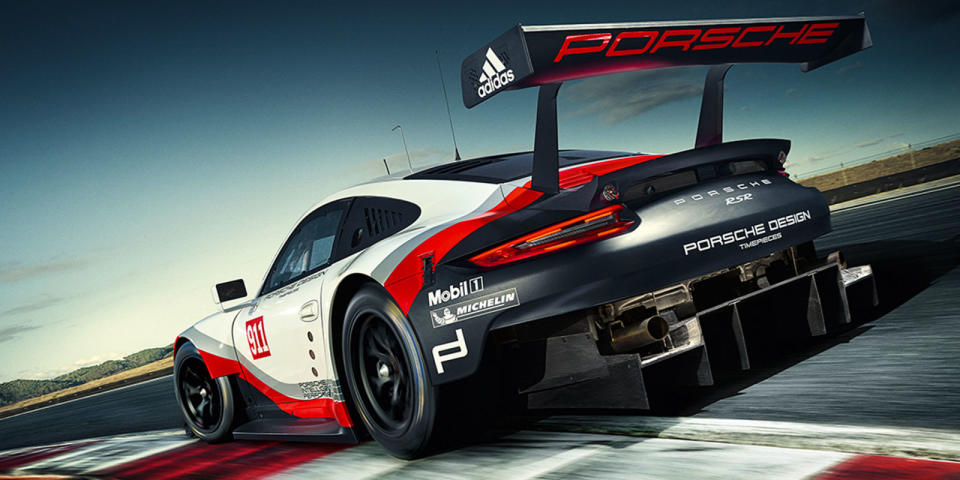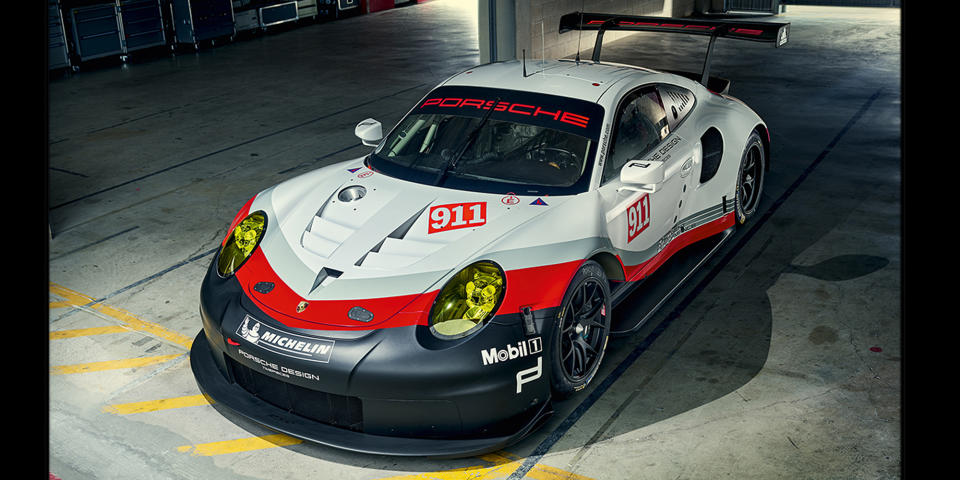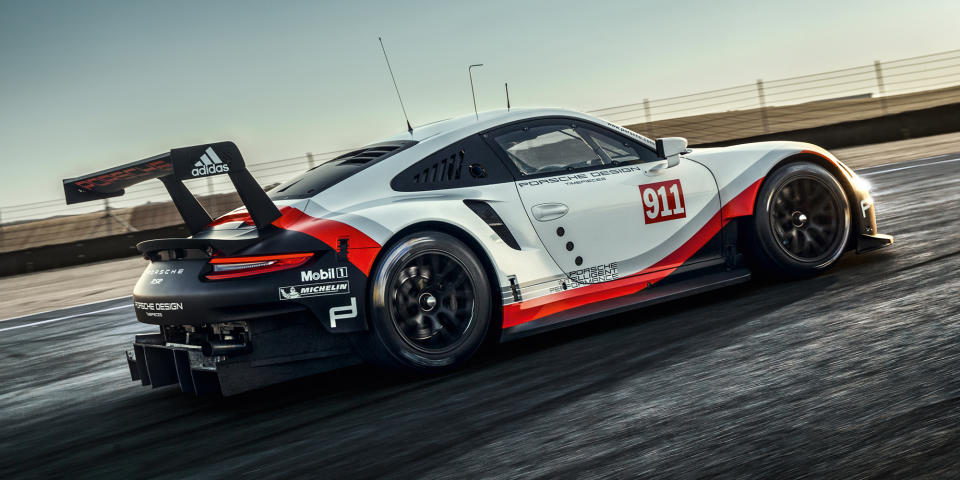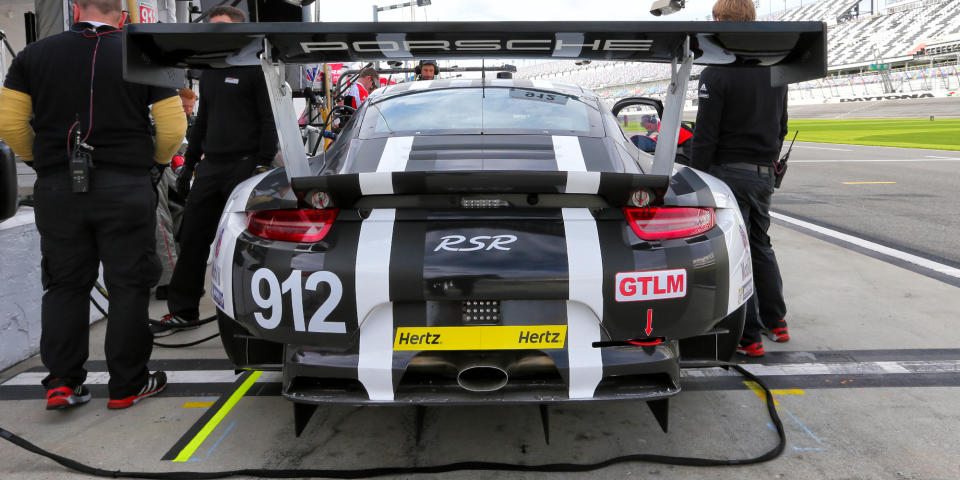This Is Porsche's Mid-Engined 911 RSR

Porsche's gone hardcore with its new 2017 911 RSR GT racer. After decades of defining the rear-engine road and competition model, the German marque has joined the mid-engine world occupied by its rivals with the expectation of beating them at their own game.
Artfully placed ahead of the rear axles, Porsche designed and built a brand-new lightweight 4.0-liter flat-six to propel the 911 RSR. The naturally-aspirated powerplant's stated output of 510 hp falls in line with the expectations put in place by the ACO for its GTE-Pro class and IMSA's GT Le Mans category.
The switch to a mid-engine layout was made for the sole purpose of improving weight distribution, and by shifting the boxer engine forward in the chassis, a secondary benefit became possible by exploiting the rearward area formerly occupied by the engine with a more aggressive diffuser.
In concert with a rear wing of impressive proportions, the enormity of the 911 RSR's upswept diffuser will give its drivers newfound stability while cornering and under braking. Taking the mid-engine weight distribution advantages one step further, Porsche's six-speed paddle-shift gearbox has been mated to the engine with a magnesium bellhousing.

With all of the kinematic elements and downforce improvements combined, the new 911 RSR should extend the competitive life of its rear tires by a noticeable margin. Where the rear-engine 911 race cars boasted incredible power-down characteristics, the pendulum-like effects on the chassis and relatively abusive treatment of its rear tires-at least in dry conditions when pitted against mid-engine dancers from Ferrari and Ford-exposed inherent limitations.
Heading into 2017 campaigns in the FIA World Endurance Championship and IMSA's WeatherTech SportsCar Championship with the same fundamental layout as the Prancing Horse's twin-turbo V8 488 and the Blue Oval's Le Mans-winning twin-turbo V6 GT should, in theory, usher in a new era of success for the fabled 911.
"While retaining the typical 911 design, this is the biggest evolution in the history of our top GT model," said Dr. Frank-Steffen Walliser, Porsche's Head of Motorsport. "For the 911 RSR, we deliberately focused on a particularly modern and light normally-aspirated engine, as this gave our engineers immense latitude in developing the vehicle.

"Apart from that, in principle, the LM-GTE and GT Le Mans class regulations stipulate the absolute equality of various drive concepts, as the torque characteristics of turbo and normally aspirated engines are aligned."
The 911 RSR underwent 21,000 miles of private testing in North America and Europe in preparation for the 2017 season, and with the relocation of the engine deep within the chassis, enhanced cooling was one of a few key development areas to optimize. The rear window, which rests directly above the motor, has been converted to feed cool air and extract hot air from the engine bay, and at the front of the car, the familiar placement of a heavily canted radiator with central extraction louvers has been retained.
Inside the cockpit, the 911 RSR sports a brand-new roll cage and its seat, which was among the first to use an adjustable slider when the first racing 911s were introduced, has given way to modern convenience. With the seat now rigidly mounted to the chassis, 911 RSR drivers of all sizes will have the luxury of using an electronically-actuated pedal assembly that can be moved fore and aft to accommodate short or tall pilots.

Of all the aspects that deserve praise, Dr. Steffen-Walliser's team should be honored for a masterful job of disguising the immense changes that have taken place within the 911 RSR's shell. Barring the presence of a surprisingly steep diffuser and the long individual exhaust pipes, the changeover from the rear-engine 2016 model to the mid-engine 2017 challenger could be easily missed by the casual observer.
Rather than cut into the car and ruin the natural lines in the name of enhanced performance, this radical departure from the norm was accomplished by preserving the visuals of the 911 in a manner that ties the past and present together in one seamless form.
This new 911 RSR hides its true advancements-and conquering intentions-in subtly delightful ways.
You Might Also Like

 Yahoo Autos
Yahoo Autos 